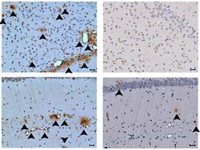Advertisement
Grab your lab coat. Let's get started
Welcome!
Welcome!
Create an account below to get 6 C&EN articles per month, receive newsletters and more - all free.
It seems this is your first time logging in online. Please enter the following information to continue.
As an ACS member you automatically get access to this site. All we need is few more details to create your reading experience.
Not you? Sign in with a different account.
Not you? Sign in with a different account.
ERROR 1
ERROR 1
ERROR 2
ERROR 2
ERROR 2
ERROR 2
ERROR 2
Password and Confirm password must match.
If you have an ACS member number, please enter it here so we can link this account to your membership. (optional)
ERROR 2
ACS values your privacy. By submitting your information, you are gaining access to C&EN and subscribing to our weekly newsletter. We use the information you provide to make your reading experience better, and we will never sell your data to third party members.
Biological Chemistry
Graphene Targets Mouse Tumor
Nanomedicine: The carbon material could image tumors or deliver anti-cancer drugs, possibly with low toxicity
by Melissae Fellet
February 28, 2012

In a step toward using graphene in medicine, researchers have demonstrated the first graphene-based imaging agent to target a tumor in live mice (ACS Nano, DOI: 10.1021/nn204625e). They hope that similar graphene-based probes could shuttle cancer drugs to tumors or even kill tumor cells directly.
One concern with using nanomaterials to attack cancer cells is the toxicity of the materials themselves. So scientists have started testing low-toxicity materials such as carbon nanotubes to find scaffolds that can carry molecular cargo.
Weibo Cai, of the University of Wisconsin School of Medicine and Public Health, and his colleagues wondered if a flake of graphene could be such a scaffold. They thought the carbon sheets would have toxicity similar to that of carbon nanotubes because the two share a carbon structure. Graphene also has unique physical properties that allow it to kill cancer cells without a drug’s assistance, Cai says. Cai’s colleagues reported in 2010 that shining near-infrared light on a graphene-treated tumor heats the graphene, killing the cancer cells (Nano Lett., DOI: 10.1021/nl100996u).
So Cai and his team tested whether they could deliver a graphene particle to a tumor in a live animal. In their test, they wanted to transport a radioactive imaging label to a tumor in a mouse. First, they coated tiny sheets of graphene oxide with strands of the polymer polyethylene glycol. On some of the polymer chains, they then attached an antibody that binds to a protein found on the blood vessels growing around some tumor types. On other polymer chains, the researchers added a copper-based radiolabel.
The scientists injected the graphene oxide probes into mice with breast cancer tumors. The team used positron emission tomography imaging to monitor where, and at what concentrations, the probes accumulated. Within 30 minutes, the graphene oxide probe appeared in tumor blood vessels and remained there at a constant level until the study ended, 48 hours later. The team concluded that the probe gets to tumors quickly and hangs around for some time, two important features for a potential nanomedicine.
Despite the probe’s success, Anjan Nan, a nanomedicine expert at the University of Maryland School of Pharmacy, worries about the toxicity of graphene-based nanomedicines. He points out that the researchers found larger amounts of the graphene oxide probe in the animals’ livers and spleens than in the tumors. He wonders if the graphene oxide sheets aggregate and then get stuck in the liver.
Cai responds that a previous study shows that graphene oxide covered with polyethylene glycol has low toxicity and easily passes through the body (ACS Nano, DOI: 10.1021/nn1024303). Jin Xie, a nanomedicine expert at the University of Georgia, is also less worried about the probes’ toxicity, because the liver levels are similar to those found with other nanoparticles, which he thinks are tolerable at this stage.
Xie would like to see tests of graphene’s ability to deliver other molecules to tumor cells. Although graphene is promising, he says, it’s too early to tell how it compares to other nanomaterials for imaging and drug delivery.





Join the conversation
Contact the reporter
Submit a Letter to the Editor for publication
Engage with us on Twitter